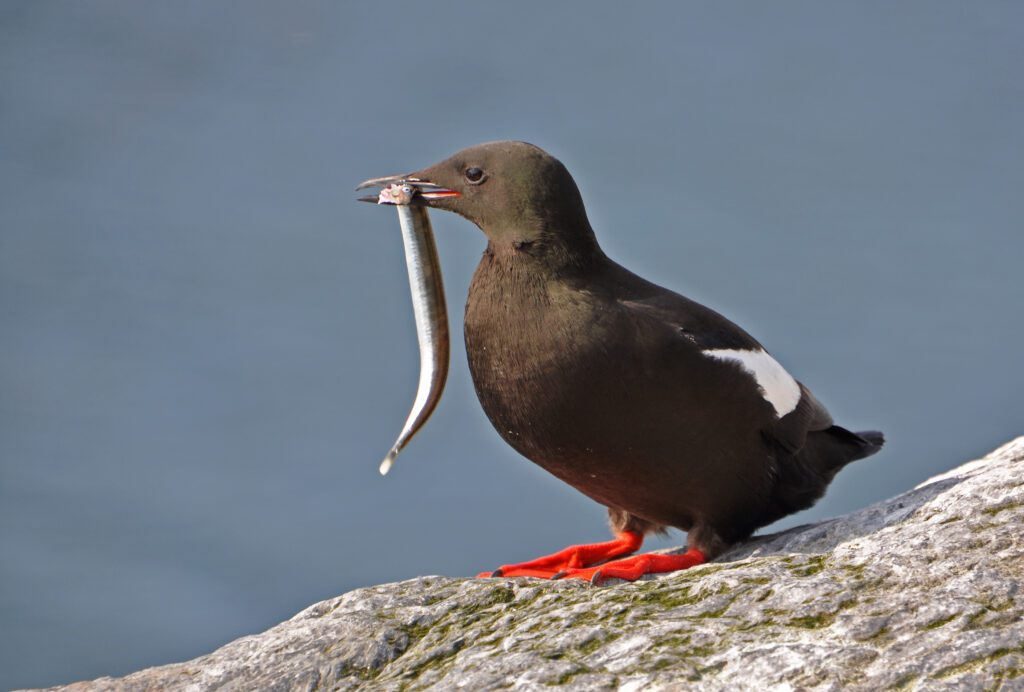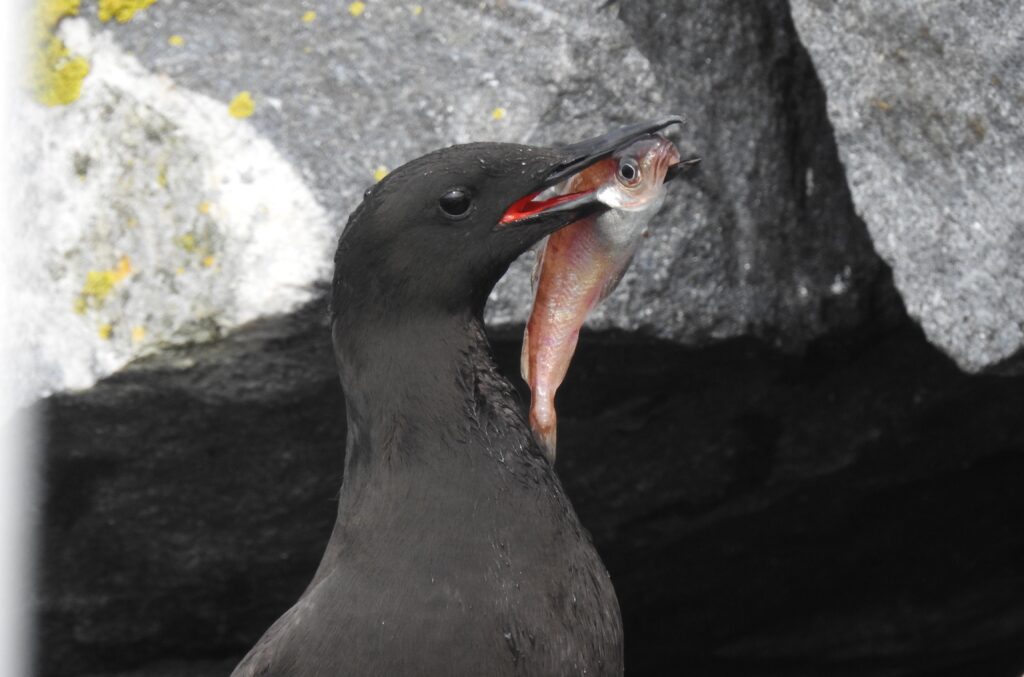Variable foraging patterns among black guillemots
With an aim to identify the characteristics of the best foraging areas for black guillemots (Cepphus grylle), researchers in SEAPOP have studied foraging behaviour and habitat use of black guillemots at three breeding locations along the Norwegian coast. Although differences in foraging activity and habitat use were found, one parameter in particular stood out as the most important.
A species under pressure
The intensification of coastal development threatens coastal seabirds, and understanding their habitat use is a key factor to guide conservation and management. In sub-arctic areas, black guillemots use coastal habitats year-round, making them extra vulnerable to the increasing human activities in these areas. In mainland Norway, one of the species’ strongholds, black guillemots are red-listed after substantial population declines. However, their fine-scale foraging behaviour has received little attention to date.
Foraging behaviour from GPS tracks
Researchers from SEAPOP have cooperated in collecting and analysing GPS tracking data from adult black guillemots at three sites (Sklinna (65°12′N), Vega (65°34′N) and Røst (67°26’N)) located across a latitudinal gradient of 250 km in central/northern Norway. Maximum foraging ranges of 33 km at Sklinna for incubating birds, and 18 km at both Vega and Sklinna for chick-rearing birds, are among the longest reported for this species. At all three sites, foraging probability was highest in shallow waters (< 50 m depth) close to the colony and declined with increasing water depth and distance from colony. However, birds from Vega also foraged over deeper waters. Kelp presence was of high importance at Sklinna, but apparently less important at Røst and Vega. There were also distinct differences in foraging activity across the day and in relation to the state of the tide among the sites.
An advice for coastal management
Differences in habitat use and foraging activity among the three study sites may be explained by differences in the availability of habitats and suitable prey. While the study highlights the importance of shallow marine areas for black guillemots, the probability of considerable variation in habitat use between sites should be considered in management plan strategies for the species.
Read the article:

Photo © Rob Barrett

Photo © Nina Dehnhard
Contact person SEAPOP: Nina Dehnhard, NINA